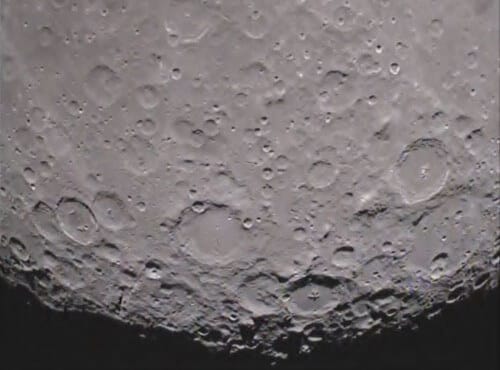The video is intended for XNUMXth-XNUMXth grade students from around the US who will use them to choose photo sites, in order to conduct research on the image that the spacecraft will take for them. At the head of the education project is Sally Ride, the first American astronaut

Cameras aboard the twin Gravity Recovery And Interior Laboratory (GRAIL) spacecraft orbiting the moon for the past month captured a unique view of the far side of the moon. MoonKAM (Moon Knowledge Acquired by Middle school students) cameras will be used by students across the US to select images from the moon that they will study in depth.
The GRAIL mission consists of two identical spacecraft, recently renamed Ebb and Flow, each equipped with a MoonKAM. The video was taken as part of the MoonKAM camera experiment on Ebb on January 19. GRAIL mission scientists want to conduct a similar experiment with the identical camera of the Flow spacecraft soon.
In the video, the North Pole is visible at the top of the screen as the spacecraft moves towards the Moon's South Pole. One of the prominent geological formations visible in the lower third of the moon is Mara Orientala - an impact crater with a diameter of 900 kilometers that extends partly on the near side and partly on the far side of the moon.
The video ends in a dismembered area near the South Pole. To the left of the center, near the bottom of the screen, you can see the Drigalsky Crater which is 149 kilometers in diameter, with a star formation in the center. This configuration is the central ridge formed billions of years ago as a result of a comet or asteroid impact several billion years ago.
"The video quality is excellent and should inspire students running MoonKAM as they prepare for lunar exploration," says Maria Zuber, GRAIL's principal investigator from the Massachusetts Institute of Technology (MIT) in Cambridge.
The twin spacecraft reached lunar orbit in the last days of 2011. Until recently they were called GRAIL-A and B. The washing machine-sized spaceships were named by fourth-graders at Emily Dickinson Elementary School in Bozeman, Mont., following a nationwide competition among students.
Thousands of students in grades XNUMX-XNUMX will select sites on the lunar surface and send requests to the control center in San Diego. The images of the target areas will be sent to the students for research. The MoonKAM project is headed by Sally Ride, the first American woman to fly into space.
"We received good responses from schools all over the country. Over 2,500 students have signed up so far," Reid said. "In mid-March, the first images of the moon taken by students using MoonKAM will arrive. I expect that this will inspire as many students as possible to develop careers in science and engineering.
Both spacecraft were launched in September 2011 and are now undergoing orbit corrections around the moon. Over time they will lower and circle the moon in an almost circular orbit at a height of 55 kilometers. They will mainly study the moon's magnetic field.

3 תגובות
In the photos from the moon you can see that we are the aliens
The conspirators won't buy this. They will claim that the students will only be limited to areas that really have nothing in them or that if the MOONKAM takes a picture of something really amazing it will not reach the students but will be stored at NASA...
So there are no aliens there?